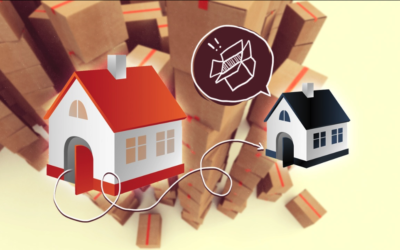Most seniors know that there will come a day when they’ll have to rightsize, either to simplify their lifestyle, to cut costs, to be closer to grandchildren, or to address medical needs.
It’s often a stressful and tolling process — both emotionally and physically. But it doesn’t have to get overwhelming. Here are some tips from MYMOVE to make rightsizing easier.
Tips to make downsizing later in life easier
1. Start early.
Give yourself plenty of time for this process, because it will inevitably take longer than you expect. Take your time, and don’t try to sort through your entire house in one day or weekend. A couple of weeks to a month is a more realistic timeline. Take it one room at a time, and take breaks throughout.
“Go through each item one by one,” says Alison Kero, CEO of ACK Organizing in Brooklyn. “It’s important to give everything you own your attention for at least a second or two. It will also help you develop a great decision-making system because you’re learning how to focus and then choose.”
If you aren’t rushed, you’ll find downsizing to be much less stressful.
2. Start small.
You probably already things you want to get rid of in the kitchen or garage, but avoid diving into such a big room at the very beginning. You have years and years of things to sort through. Start in an area with little emotional attachment. The laundry room or linen closet are good options.
Understand your needs. If you’re moving into a two-bedroom house, four sets of sheets should be plenty. The rest can go.
“Garages/attics/basements are notorious for being the hardest rooms to tackle,” says Debra Blue, of Blue Moon Estate Sales. “These rooms tend to accumulate all the old hobbies, boxes, old holiday decorations, and clutter. They’re also known to be rather uncomfortable spaces. In the summer it’s too hot, winter it’s too cold, and in the springtime, it can be too humid.”
3. Eliminate rooms you won’t have in your new home.
If you’re moving to an apartment or townhome, you might not have a garage or office space. Nearly everything in those spaces will need to be sold, donated, tossed, or relocated to other rooms. These areas might also be good items for consignment or garage sales; nice office furniture and outdoor tools are more valuable than old sofas or mattresses.
“Organize backwards,” suggests Jamie Novak, author of ‘Keep This Toss That.’ “A common suggestion is to pick out the stuff you don’t want and pack the rest. Try the opposite — pack the keepers. What’s left can be looked at and most can be shared or donated.”
4. Get rid of duplicates.
You’ll find this is especially true in your kitchen. You have two or three spatulas and ladles, a couple of oversized stock pots, and four different sized cookie sheets. Now’s the time to reduce the clutter. If you’re feeling wary of handing off that second roasting pan because you use it every Christmas (but at no other time during the year), consider giving it to a child or grandchild who can bring it over for the holiday and take it home when they leave.
5. Only make Yes or No piles — no Maybes.
When you’re going through years of belongings, some things are going to tug at your heartstrings, and you’ll be tempted to make a third pile of things to keep if you have space. Don’t fall for it. You’ll end up with a Maybe pile that’s bigger than either of the other two. When that happens, you haven’t really made any progress in sorting, just moved it across the room.
Take a hard look at every item you pick up. If you use it regularly, keep it. But it’s time to let something go if it’s been sitting in a closet or on a shelf for a year or more.
“If you already weren’t using it, or didn’t like it, why on earth would you want to pack it up and schlep it to your next house?” says Hazel Thornton, of New Mexico-based Organized for Life. “I know it sounds silly, but people do it all the time. Moving isn’t cheap, either; do you really want to pay extra to move stuff you don’t even want? Don’t delude yourself by telling yourself you’ll deal with it at your next destination. No, you won’t.”
6. Reduce collections creatively.
It can be hard to let go of a lifetime collection of porcelain dolls or snow globes from all your vacations, but they will eat up a lot of space or end up stored in a box where you’ll never see them.
Instead, pick a couple to keep and take high-resolution photos of the rest, then have them made into a photo book that can sit on your coffee table or mantle. You and guests will be able to enjoy them without the clutter. There are also tech tools or websites such as Fotobridge.com that will convert those boxes of photo negatives to digital.
7. Don’t be afraid to sell things yourself.
With Craigslist, Ebay, numerous smartphone apps, yard sales, and an abundance of consignment shops, selling your belongings has never been easier. You probably won’t make a ton of money on most items, so consider how much time you want to invest.
Yard sales are usually faster, but items won’t sell for as much. Craigslist has its drawbacks, but you’ll have a much wider audience and can probably get more for your stuff. Consignment is a good option for high-end furniture, handbags, and other accessories; prices are reasonable, and they’ll sometimes pick up heavy furniture for you.
If you aren’t handy with a computer, your grandchildren can probably help. But if that all sounds like more than you care to deal with, hiring a firm to run an estate sale might be your best bet.
8. Consider legacy gifts early.
Is there an antique clock in your foyer that you plan to one day leave to your son? Maybe a china collection your granddaughter adores? If there are certain heirlooms or pieces you plan to leave to your family in your will, consider giving those gifts now.
This has two benefits: you’ll get the items out of our way, and you’ll be able to enjoy the feeling of giving those items to your loved ones now. While you’re at it, find out if there are any items your children want that you don’t know about — you might find an easy way to make them happy and lighten your load.
9. Allow some time to reminisce.
While you’re cleaning and sorting, there will be some days when you want to stop emptying the kids’ bedrooms and just look through the kindergarten drawings, soccer trophies, and once-prized stuffed animals. It’s OK to pause and let the nostalgia take over for a bit. Cry if you need to, or move on to another room and come back. This is why you started early — just don’t let it prevent you from eventually getting the job done.
“I always ask my clients how the item at hand makes them feel,” says Morgan Ovens, of Haven Home in Los Angeles. “If it brings up any negative feelings, let it go. If it brings happiness of course it stays! The idea here is to only be surrounded by things you absolutely love. Isn’t that a great goal?”
10. Use this as a chance to bond.
Invite the kids and grandkids over for the weekend. Talk to the young ones about where you bought your favorite trinkets. Tell them about your family’s heirlooms. Let them help pack, ask questions, and spend time with you. Get help posting items for sale online.
It can be one more moment your family shares together in the house you’ve loved — before you start making those memories together in your next home. Remember that it’s your family that’s important for the memories you cherish, not the stuff around you.
Making the move after you pack
Now that you’ve downsized your belongings, how are you going to make your move? You’ll want to have an answer in mind from the beginning of your downsizing process.
Will you be rounding up family members to help pack and drive a moving truck? Or will you pay for a full-service moving company to pack, ship, and unpack your things? Perhaps something in-between, with a mobile storage option in which you pack a container, and then the storage company does the shipping?
For seniors, there’s often another option. More companies, known as senior move managers, are popping up across the country that cater specifically to seniors moving — either to smaller homes or moving into senior living or nursing communities. They’ll usually do as much or as little as you want, from packing and moving to home cleaning and estate sales.
There are hundreds of senior move specialists. The National Association of Senior Move Managers reported nearly 1,000 companies as members in its 2015-16 annual report.
“There are now senior move specialists in most communities,” says Sara Geber, an aging transition coach with LifeEncore. “These are people trained to help at every step of the way, from selecting the new residence to downsizing, to transportation back and forth, etc. They are generally very reasonable in cost and well worth the expenditure. Most real estate brokers know of such professionals, as do estate attorneys and financial advisers.”
It’s important to keep these options in mind as you downsize because it might change your opinion on whether to keep or sell certain items. If you’re moving everything yourself, a 300-pound china cabinet might be better suited for the consignment shop to avoid the hassle and risk of injury. If you’re paying for full-service, you might be more inclined to keep it, but know that such heavy items add onto the price tag.
You’ll also want to be on the lookout for potential scammers. It’s fairly rare, but there are some companies out there that will promise one attractive price for a full-service move, and then once your stuff is all packed up in the truck, they’ll demand more money while holding your items hostage. Do your research and use companies that come with recommendations from family and friends.
If you’re undecided about what type of move is best for you, let MYMOVE help you compare moving options.
Dealing with the emotional toll of downsizing
Inevitably, most people will struggle a bit with nostalgia when they’ve reached a point where it’s time to downsize. Geber, with LifeEncore, spoke with MYMOVE about how to make the best of this difficult time.
“Change is hard for everyone, but the older we get, the more accustomed we are to our surroundings and our ‘stuff,’ even if all that stuff threatens to strangle us,” she says.
She says a lot of these negative feelings come from both sadness and fear, which is why she recommends making a downsize as early as possible when it’s easier to adjust to a new environment.
Many senior living communities allow potential residents to spend a few nights on site to get an idea of what it would be like to live there. Take advantage of that if you can. You want to make sure you find the right fit, Geber says.
And don’t let the apprehension get you down.
“Looking forward to a new environment” can help ease the transition, Geber says. Focus on the positives and appreciate how much simpler life will be with fewer surfaces to dust, rooms to vacuum, or towels to wash.
Your downsize doesn’t have to be stressful, sad, or scary. Stay positive and get excited about a simpler life in a new place with less clutter.
Article source: https://www.mymove.com/moving/senior-guide-downsizing/




0 Comments